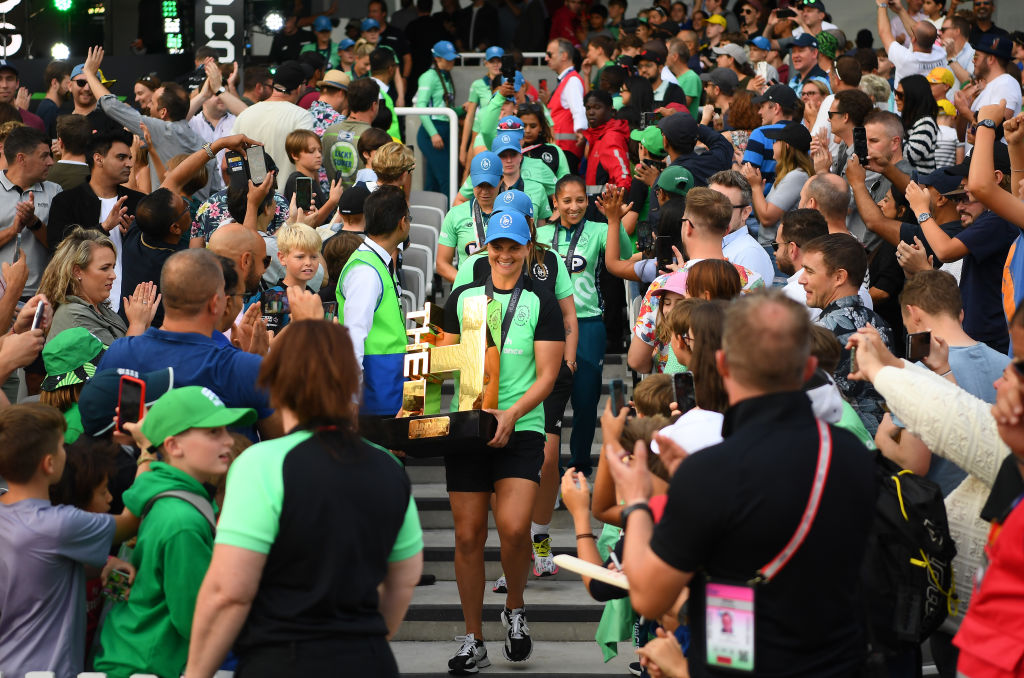‘The WPL is out ahead but The Hundred can be next best thing in women’s cricket’

The Hundred may be approaching its third season this summer but it has been blown off course by the hurricane that is the Women’s Premier League (WPL).
The WPL is the women’s equivalent to the Indian Premier League (IPL), cricket’s biggest global franchise product, and it has revolutionised the landscape of the women’s game.
Players are paid six-figure sums for less than a month’s work and the world’s best players are now keeping an eye on the subcontinent to ensure they’re in the mix for future editions.
Hundred realism
“I’m realistic as to where we are [The Hundred, behind the WPL] in the pecking order moving forwards but [we are] the No1 challenger competition, firmly in No2,” Beth Barrett-Wild, director of the women’s professional game at the England and Wales Cricket Board, tells City A.M.
“We’re certainly aware and alert to the WPL but I think at the moment I’m very much seeing it as a lifting opportunity rather than ‘oh gosh, it’s difficult to keep up’.
“I’ve spent the whole time benchmarking where we are against the WPL and the WBBL [Australia’s premier T20 competition], and what the WPL has done for women’s cricket – we talk about these breakthrough moments.
“It has shifted the economics of the women’s game. It has completely shifted the global dynamics and the economy of women’s cricket.
“But I don’t necessarily see it as being direct competition at the moment, because the women’s calendar has got a bit more flexibility to it.”
The Hundred has been a revelation for women’s cricket and has undeniably had an impact on the sport.
And though uncertainty surrounds some of its commercial deals, the competition has unearthed the likes of bowler Issy Wong – who took the first WPL hat-trick for Mumbai earlier this year, and is part of England’s squad for the Women’s Ashes, which starts today.
Wong and Bell
“Issy Wong and Lauren Bell [bowler, 22] are players that people hadn’t heard of, partly because they are so young, but they’ve had their profiles really turbocharged through competitions like The Hundred,” Barrett-Wild said.
“That’s what’s different going into this [Ashes] series is these players, they’ve almost got a level of fearlessness about them now, and that is partly because they’re used to playing in these big venues.
“She [Wong] is a very exciting player to watch. I think when she took that hat-trick [in the WPL] – I’m even getting goosebumps thinking about it now – for Mumbai Indians, for England to have somebody like that in their armoury to let them loose is just incredibly exciting.
“Now we have over 100 players on full-time professional contracts in this country now which, compared to where we were in 2019, going into the Women’s Ashes we had our 18 English central contracts, but we didn’t have any domestic contracts.”
The Women’s Ashes format – one Test, three Twenty20 Internationals and three One-Day Internationals – uses a points system to determine the winner.
Back in the day
In 2013 matches were hosted at the likes of Chelmsford and Chester-le-Street, but this year the series will visit bigger venues such as Trent Bridge, the Oval and Edgbaston used. Around 20,000 tickets have been sold for the Birmingham T20.
And the two iconic cricket venues of London – Lord’s and the Oval – are key to the capital being a global centre for the sport, Barrett-Wild insisted.
“I think for the Women’s Ashes to get to play in those two venues, they were the two that when we were first scheduling, we had to get them in the mix,” she said.
“[London] is definitely a powerhouse of global cricket, having those two venues side by side and for the women to get, and I don’t want it to sound like we’re happy to be there, the opportunity and the chance to play in those venues, it’s almost about time actually.”
So it is about time the women get the chance to shine on the biggest stage for the biggest cricketing series. It’s just a case of performing on the pitch now.